Fix a Tumbler Barrel That Stopped Turning
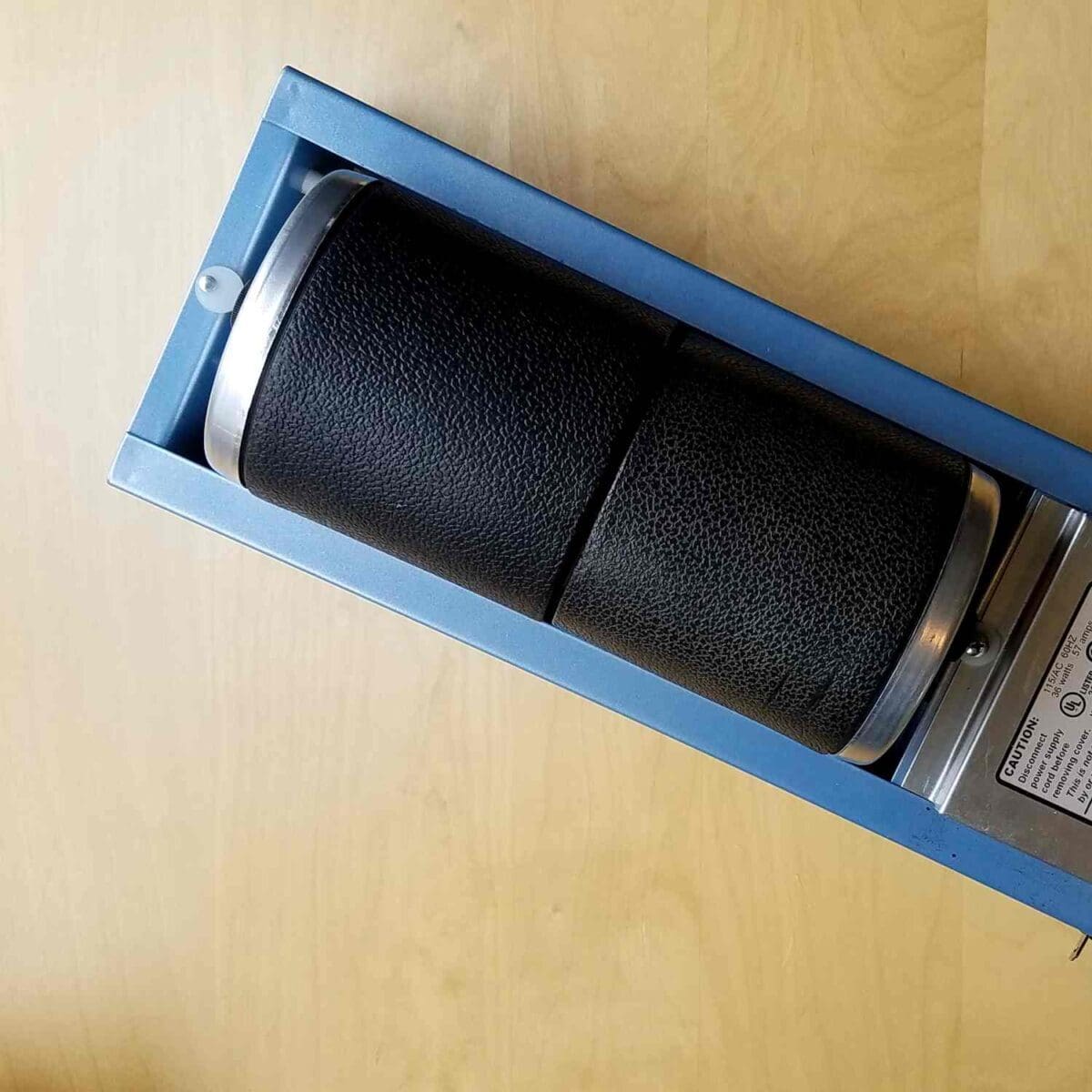
I’ve been making a lot of jewelry lately, and my tumbler’s been working overtime. Over the past weekend I noticed that my barrels stopped turning. This happened intermittently, at first. The barrels would slip and sputter. The problem eventually worsened over the next couple of days. I finally had to reduce the weight on my tumbler to just a single barrel in order to keep at least one barrel in action.
This is a common problem with jewelry tumblers that’s caused by perfectly normal wear and tear on the drive belt. And it’s super easy to fix! It requires two basic hand tools that you probably have on hand and about five minutes of your time. So, don’t worry. We’ll have your tumbler up and running again in a jiff!
This post may contain affiliate links. If you click on a link and then make a purchase, I may earn a small commission (at no cost to you). As an Amazon Associate I earn from qualifying purchases. To learn more, please see my full disclaimer.
About This Tutorial
My tumbler is a Loretone Model 33B dual barrel tumbler. I’ve only ever owned Loretone tumblers. It’s a name that I know and trust, and I’m quite familiar with the brand. This tutorial applies specifically to Loretone rotary tumblers.
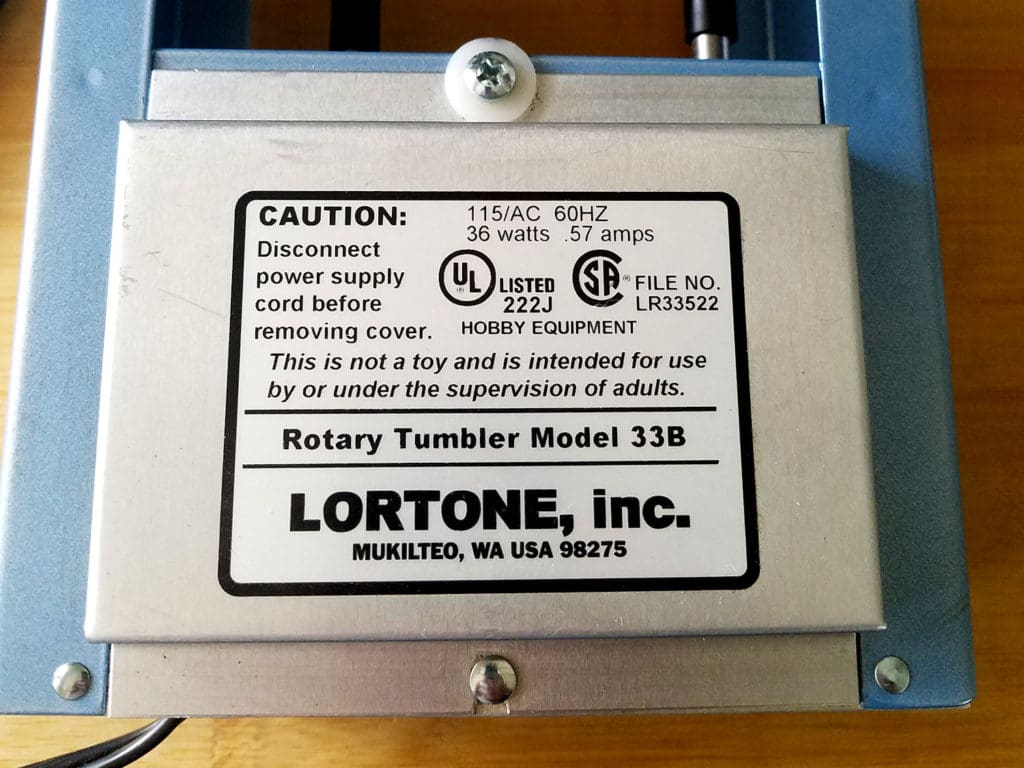
That said, most rotary tumblers have a similar drive mechanism. These instructions may apply to other brands of tumblers. However, I am not responsible for any damages that may result from attempting to apply the routine tumbler maintenance technique covered in this tutorial to a different brand of tumbler.
If you’re not comfortable working on electromechanical devices, I recommend referring to your owner’s manual or seeking assistance directly from the manufacturer of your tumbler before attempting to make any adjustments or repairs on your tumbler.
Why Did My Tumbler Barrel Stop Turning?!
There are a couple of reasons that can cause your barrels stop turning . But the most common reason, by far, is that your drive belt has simply stretched and lost its tension over time.
This is the result of perfectly normal wear and tear. As your tumbler runs, the drive belt slowly breaks down due to friction on the pulleys between the motor and the drive rollers. As the belt gradually wears out, it loses tension. Eventually, the belt won’t have enough tension to effectively drive the barrels.
You’ll know this is happening when your barrels start to slip or they stop turning entirely as mine did. In the case of a dual barrel tumbler like mine, you may also find that the drive no longer has the oomph to roll two barrels at once.
How Do I Fix It?
First things first. We have to determine if this is indeed just a loose belt or if your belt is actually broken. And we do that by taking a look under the hood.
Gather Your Tools
The only tools needed for this routine repair are a Phillips-head screwdriver and either a 5/16″ socket or a small adjustable crescent wrench (not pictured).
I used a socket because I happened to have one on hand. But an adjustable wrench works just as well.

Before proceeding, unplug your tumbler. Never work on a an electrical appliance while it’s plugged in!
Let’s Take a Look
Once your tumbler is safely unplugged, set it on a flat sturdy surface, such as your workbench. Then use a Phillips-head screwdriver to remove the screw and plastic washer on the barrel side of the housing cover, as shown below.
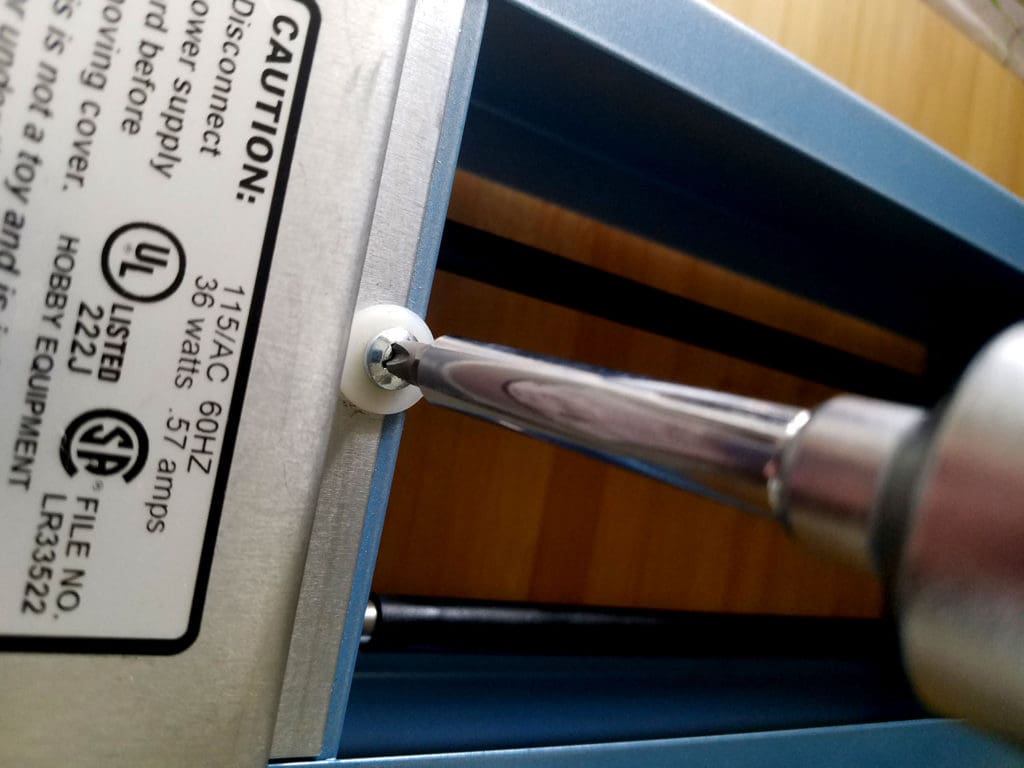
The Anatomy of a Rotary Tumbler
A rotary tumbler is a super simple machine that consists of a small but mighty drive motor and a drive roller mechanism. The motor is harnessed to the drive roller with a small rubber belt. And it’s that belt that we’re going to inspect.
Can you see how much slack there is in my drive belt? It’s so loose that I could easily remove and replace it right now if I wanted to.
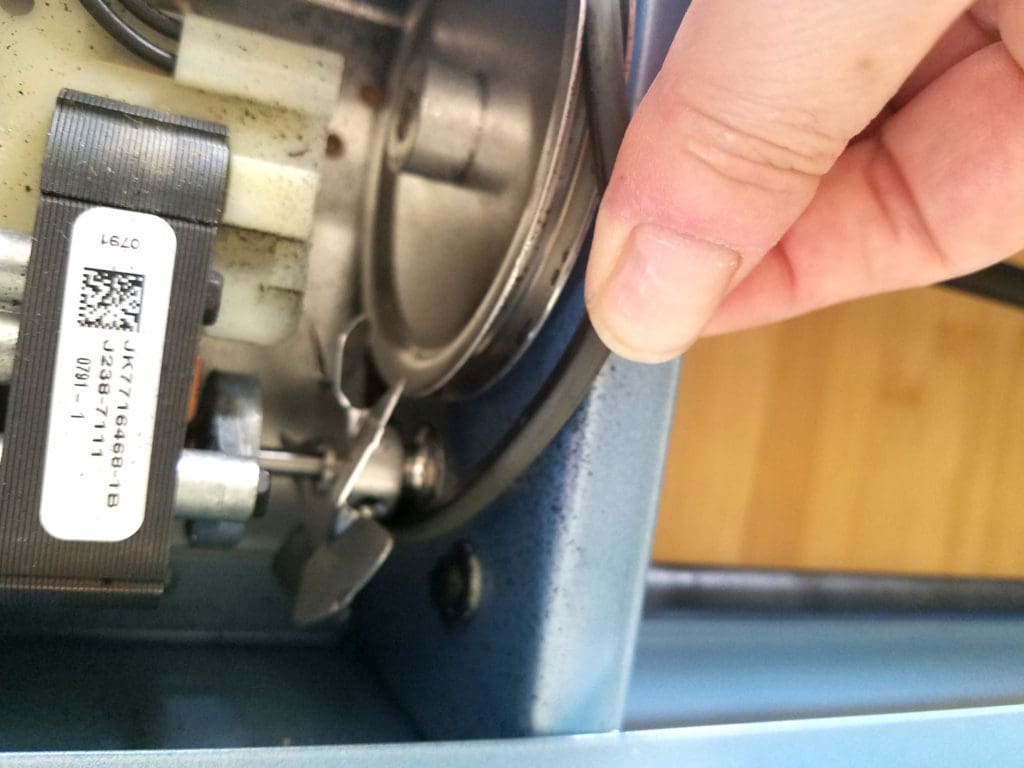
I like to get as much mileage as I can out of my drive belts, though. So I’m going to try adjusting the belt tension first.
This will buy me some time to locate my spare replacement belts, which are packed away in a box that’s been in storage since we moved into our current apartment nearly two years ago. So, it’s been at least that long since the last time I had to change the drive belt.
If you use your tumbler frequently, you will need to replace the drive belt at some point. That’s a normal maintenance task that you can expect as long as you own your tumbler. So it’s always a good idea to keep some spare replacement belts on hand.
How to Adjust the Belt Tension
Take a look at the end of the motor housing and you’ll see three small cap nuts on slotted holes. The cap nuts cover the mounting screws that secure the drive motor to the housing. And those slots are designed to allow you to adjust the drive belt tension.
Use your socket or adjustable wrench to loosen those three nuts just enough to let the motor slide.
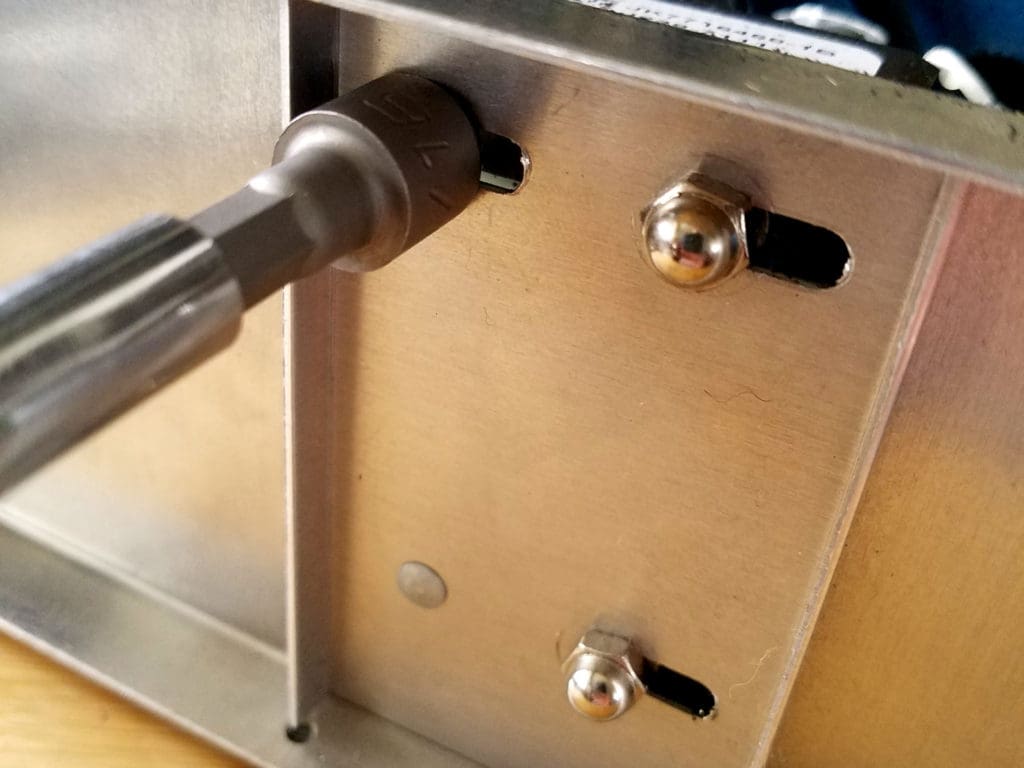
Then, using the fingers of your free hand, shift the motor toward the side of the housing until the mounting screws reach the other ends of the three slotted holes.
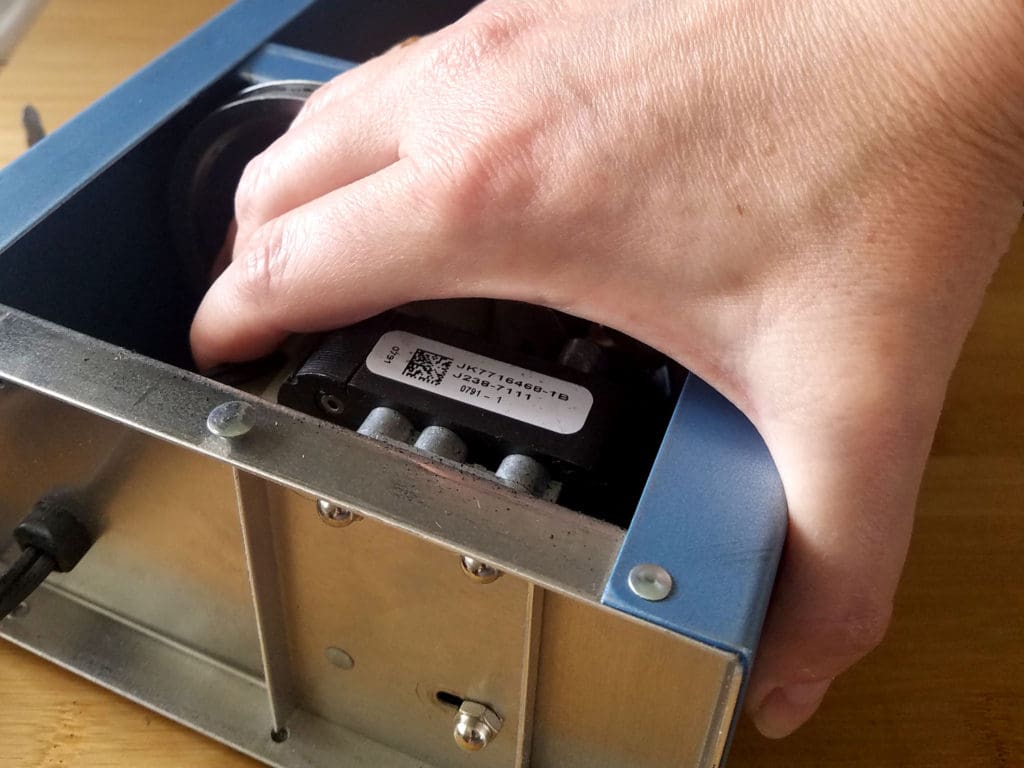
Hold the motor securely in place with your free hand while you re-tighten the cap nuts.
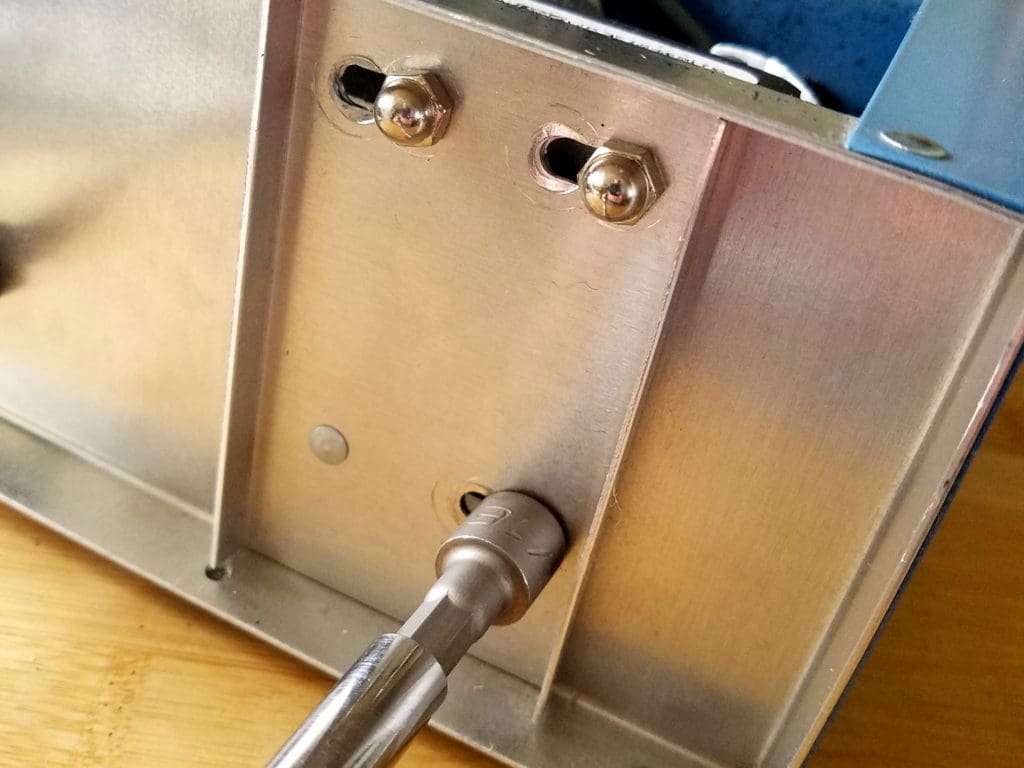
That’s all there is to it! You should be good to go at this point. So go ahead and replace the housing cover, as shown.

Set your loaded barrel(s) back on the tumbler and power up the motor. You should be right back in business with a tumbler that’s rolling like a champ!
Now’s a good time to give your repair a solid test drive. And you might as well clean your steel shot while you’re at it. You know, two birds. One stone.
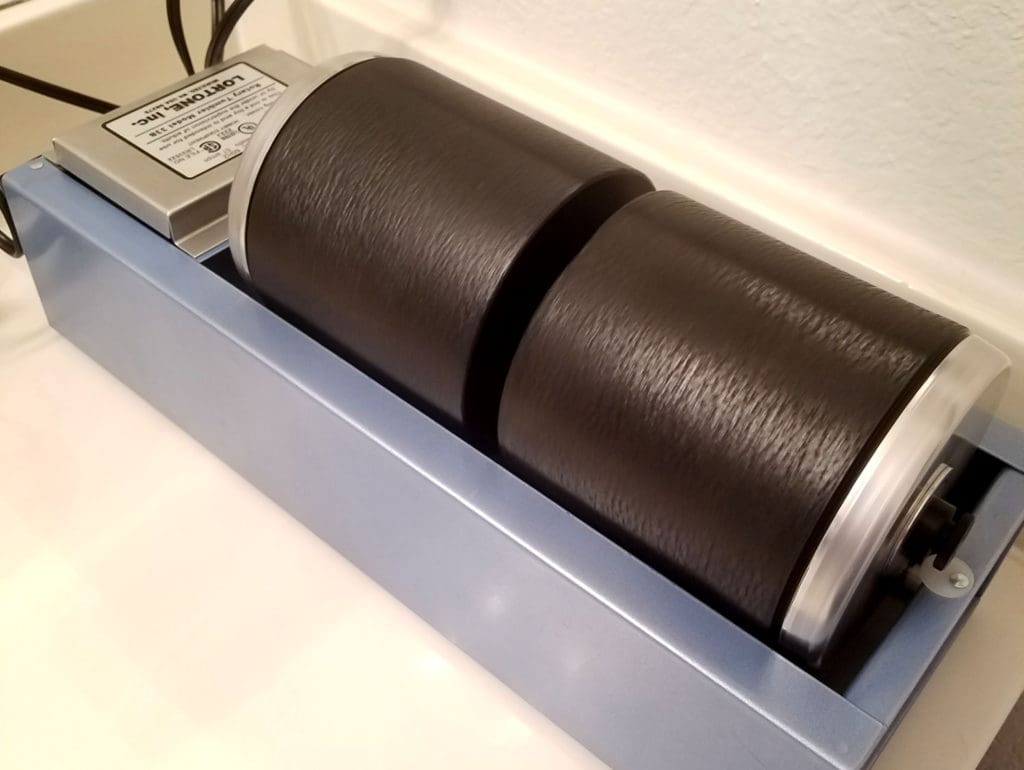
Discover More Behind Door 44
Was this article helpful? If so, please give it some love and share it with your follow jewelry makers. There’s a pinable image below, for your convenience.
Is there another jewelry related topic you’d like me to discuss? Let me know in the comments! As always, thanks for stopping by!
I like to share useful wire weaving tips and tricks on my social media channels, and we have some great conversations about wire jewelry in my private Facebook Group. Also, be sure to connect with me @door44studios on Instagram, and Facebook to keep up with everything that’s happening behind Door 44. And if you haven’t already done so, be sure to subscribe to my YouTube channel where you’ll find new wire jewelry videos weekly.
Until next time, go make something beautiful!

Don’t Forget to Pin this Post for Later!
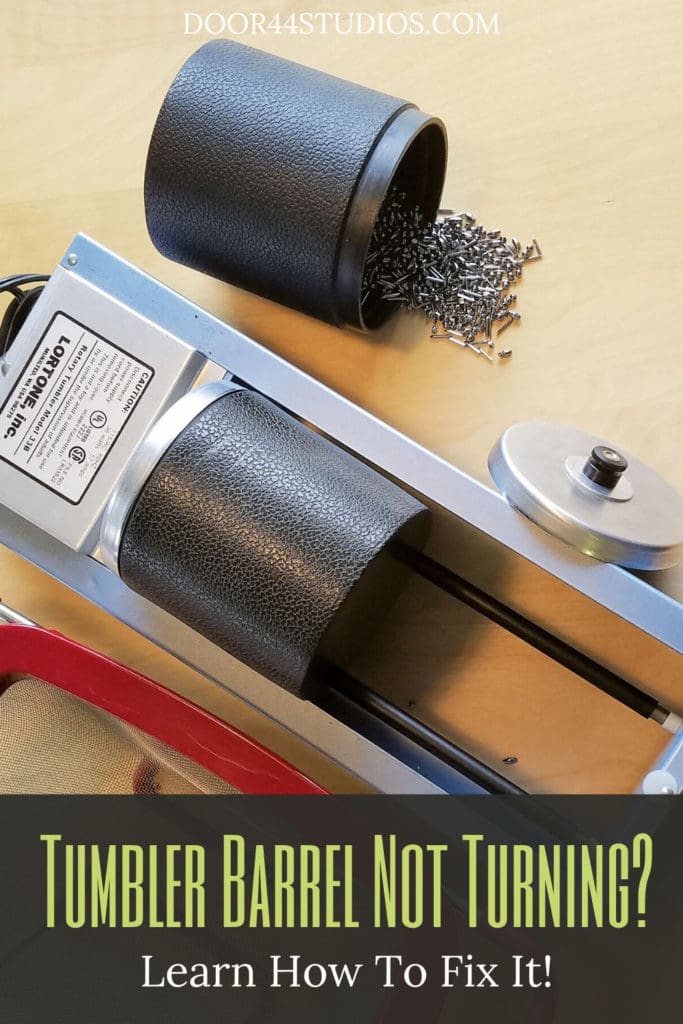




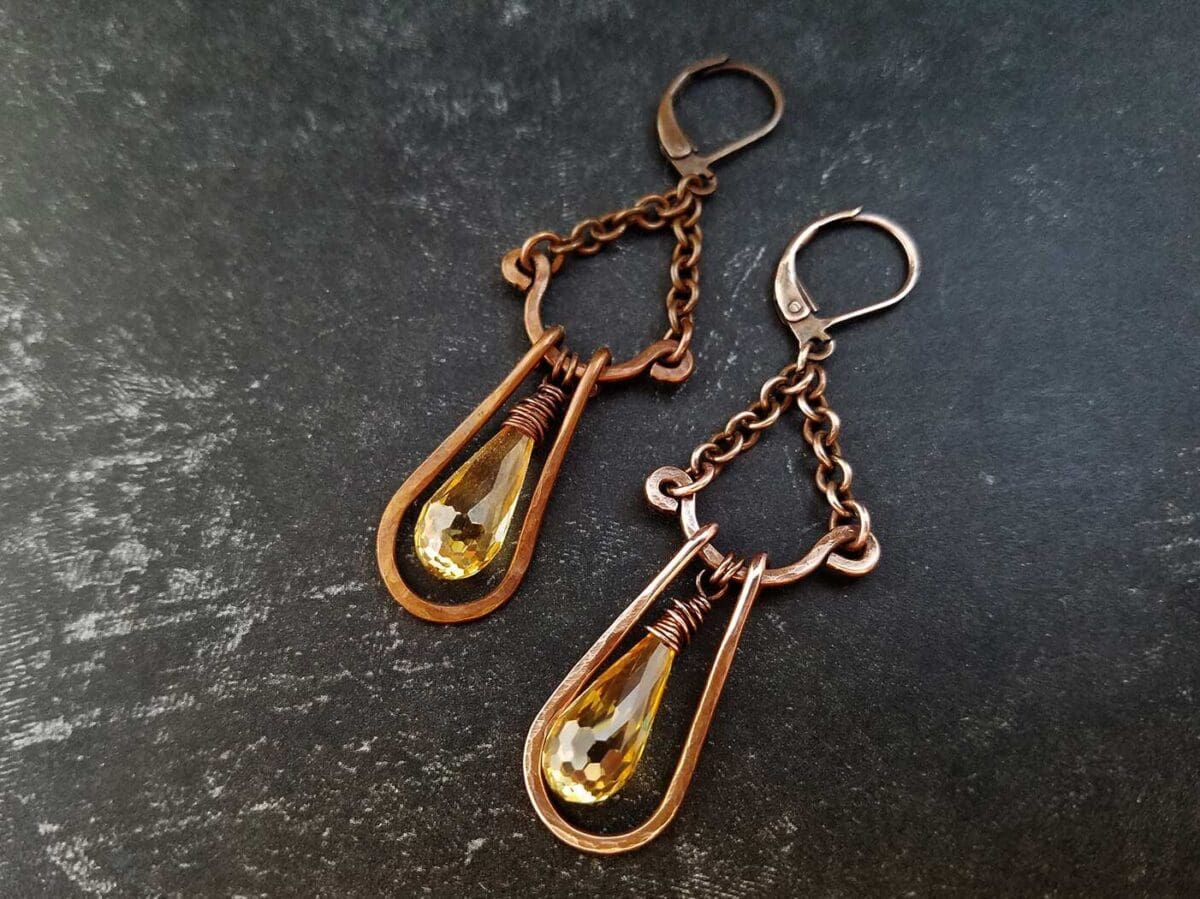

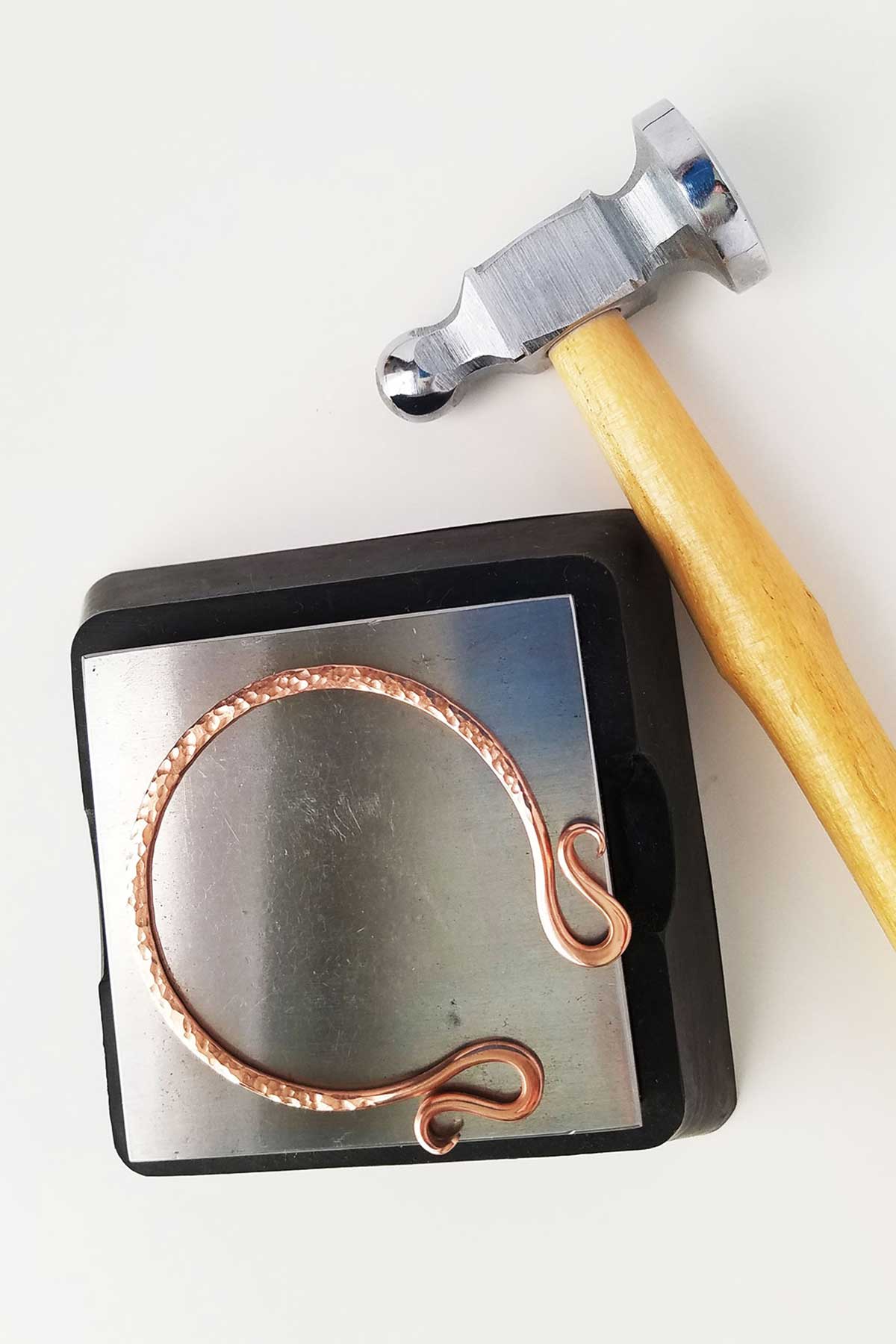
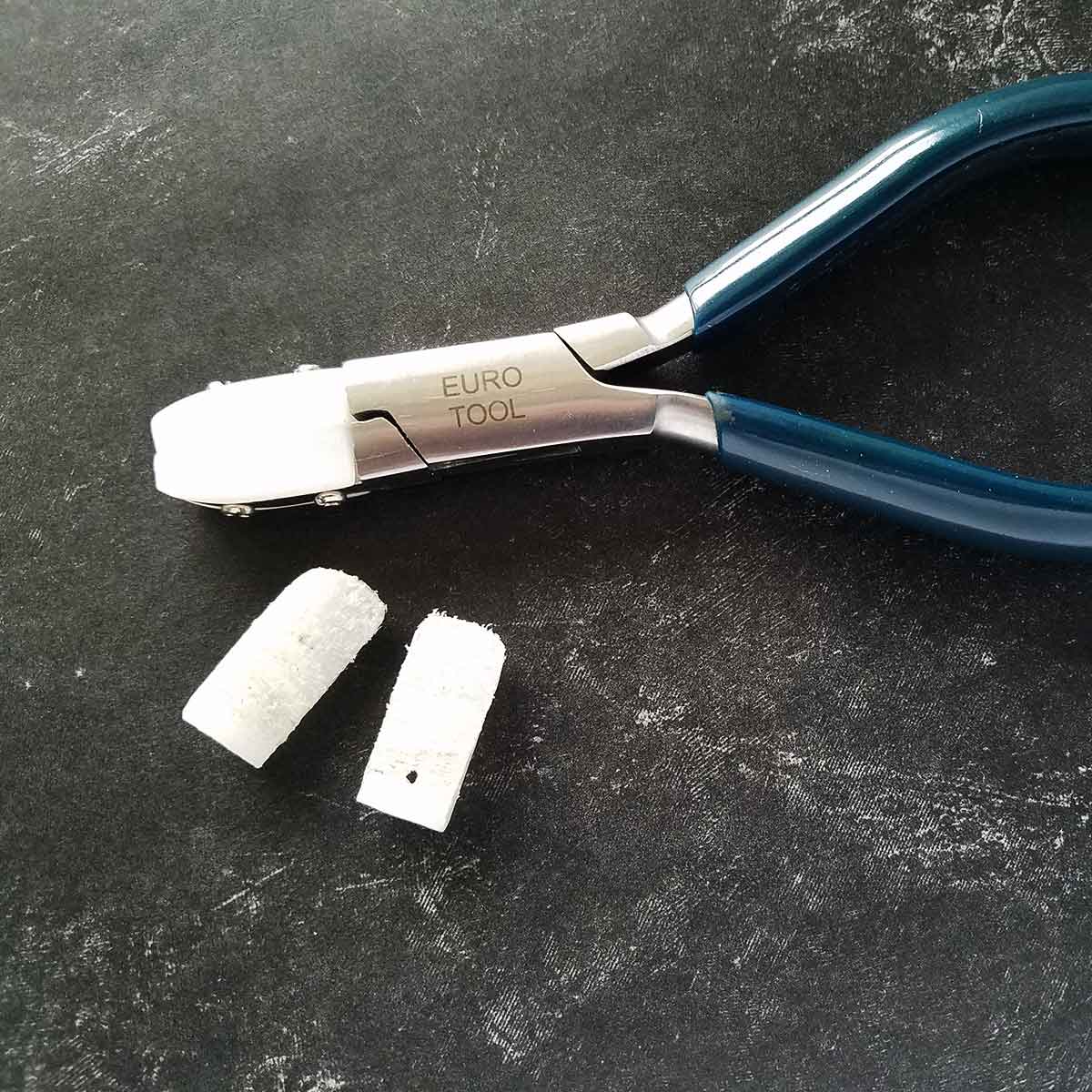
I have a Lortone model QT- NR. The drum slips on the roller that the motor turns. What can I do to make the drum turn with the roller?
That’s a great question, Bob! Your tumbler is much heavier duty than mine, but the drive system is basically the same. There are a few things to look for in this instance. First, make sure that the exterior of your barrel and the roller bar are clean and free of dust and debris. The barrels are made of rubber specifically to create some friction between the barrel and the roller to help them turn. But if you’re tumbling stones, your equipment will inevitably get covered with dust and residue from your tumbling media. That can reduce the friction between your barrel and the roller. Secondly, make sure you’re not exceeding the weight capacity for your tumbler. The QT models have a capacity between 6 and 12 pounds, depending on the exact model that you have. Overloading the barrels can also cause slippage. So, weigh your barrel when it’s fully loaded and make sure that the total weight of the barrel and its contents don’t exceed the weight rating for your tumbler. If neither of those two checks fix the problem, it’s time to look at your drive belt. It may be time to replace it.
Thanks, I moved the guide to the underside of the frame, but that didn’t help. I added more brass in my cleaning media and it started working perfectly. I use my tumbler to clean ammunition brass before reloading.
Bob
Interesting. Maybe your barrel was too light? I’ve never had that particular problem with my tumblers, but I’m glad you got it going!
Thanks for demystifying this repair! I just tightened my belt after putting it off for weeks!
You’re very welcome! So glad I could help.
Wow thank you soo much the article just save my life now. Its so simple, easy and direct. Thanks so much for sharing.
You’re very welcome. It is a simple fix and one that everyone who owns a tumbler needs to know. So, please share this link with anyone you know who might be struggling with a tumbler barrel that’s stopped turning!
Only one of my shafts is spinning how can I fix this, I recently put mineral oil on both of them, per instructions in the manual
Hi, Jamee,
It’s hard to say without knowing what type of tumbler you’re using. They’re not all made the same. Only one shaft on my Loretone tumbler is connected to the drive motor. So, technically, just that one shaft spins and drives the barrel. The other shaft spins as a result of friction between the barrel and the shaft, and it’s there mainly to balance the barrel. I would suggest taking the cover off of your drive motor and inspecting the belt. They’re really simple devices, so you should be able to see quickly which shaft is connected to the drive motor. It’s possible that both of them are driven, in which case I would suspect that the bearings in the shaft that’s not spinning are bad. In that case, you’d have to see if you can replace that whole roller assembly. If only one shaft is tied to the drive motor and that’s the one that’s not spinning, it’s most likely your drive belt. Belts get worn and they stretch over time, which loosens the tension and eventually stops driving the shafts. You can try increasing the tension on your belt, as I demonstrate in this post. If that doesn’t work, you’ll need to replace the belt. Finally, it’s possible that the bearings in the drive shaft are worn out, in which case you’ll have to replace that shaft assembly. Again, without knowing what type of tumbler you’re using and exactly how it’s put together, I can’t pinpoint the problem exactly. But it’s almost always the drive belt. And if not that, the next place I look is at the bearings on the roller shafts. Hope that helps!
What if tumbler dont need a belt then what do I do to fix it from not spinning
I’m afraid I’m not familiar with that type of tumbler. When in doubt, always refer to the manufacturer’s recommendations. Most user’s manuals for small appliances are readily available online these days. So, use your favorite search engine to locate a copy of your manual if you don’t have the physical copy on file.
Wendy, You’re brilliant. I’ve been playing with my tumbler for a few days and you solved my belt problem.
Thank you, Marily
My pleasure! I’m happy to help.
Hi we have a 3a lortone tumbler have replaced the belt as the drum wasn’t turning, put new belt on adjusted but the drum is still stopping any help would be appreciated, thanks Steve
Hi, Steve. If it’s still stopping with a new belt, that usually indicates that the belt tension isn’t tight enough to drive the rollers. You said you “adjusted”, so I assume that means you already adjusted the belt tension. If that’s the case, then the next thing to look at are the bearings on your rollers. Check your drive roller and make sure you can turn it freely by hand. If you feel any binding, that’s an indication that your roller bearings are shot. If it turns freely, then it could be that the surface of your barrel and/or your drive roller is too slick to create friction between those two surfaces. Clean both surfaces with a degreasing dish soap to remove any oily buildup that could cause slipping.
Also, if you’re in the habit of storing your barrel on your tumbler when it’s not in use, the barrel could be a bit misshapen, which can also create drive issues over time. So, make sure your barrel doesn’t have any flat spots on it. You’ll be able to feel that by rolling it on a flat surface with your hands. If you feel flat spots, press them out by hand rolling the barrel on a flat surface. Then store your barrels upright on a flat surface instead of on the tumbler to prevent that problem down the road.
If all of those fixes fail, then it could be that your drive motor is failing or that the linkage between the motor and the drive roller is broken. I burned the motor out on my first tumbler because I mistakenly overloaded my barrels. So, also make sure that you’re not overloading your machine. Those motors are rated for no more than three pounds per loaded barrel. That weight limit includes the barrel itself and all of its contents (water, shot, and jewelry).
Googled why the MOTOR SEIZED UP. The MOTOR. I know about belts, the belt is FINE. The actual motor turns like it’s got sludge in it.
Got a page about fixing that?
It sounds like the drive on your motor is finished. I do not have an easy fix for that problem. I’ve never had to replace a motor on my tumbler, but I’m sure they’re readily available from the manufacturer or their main retailers. Kingsley North Lapidary is a great source for Loretone tumbler parts. Give them a shot: https://kingsleynorth.com/